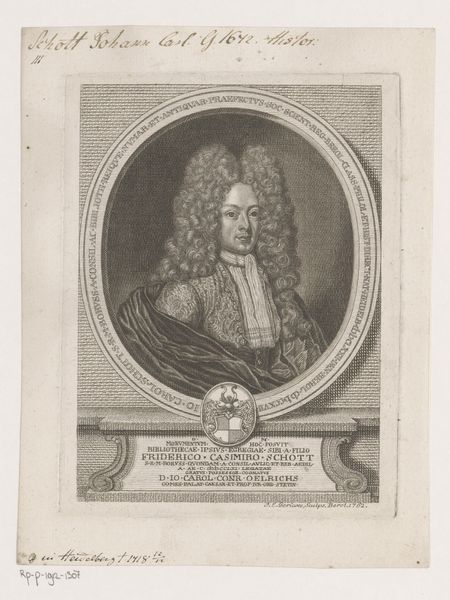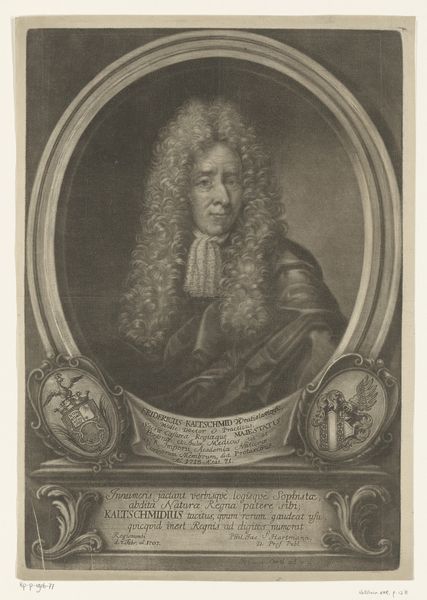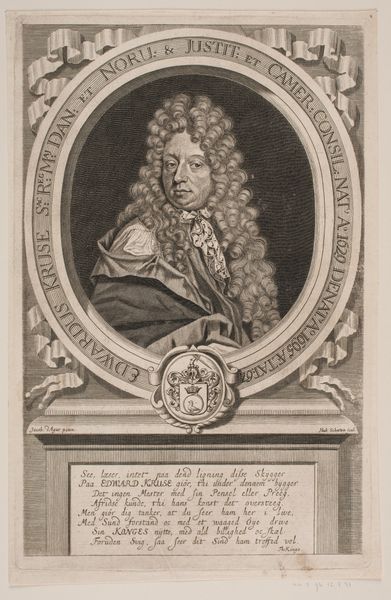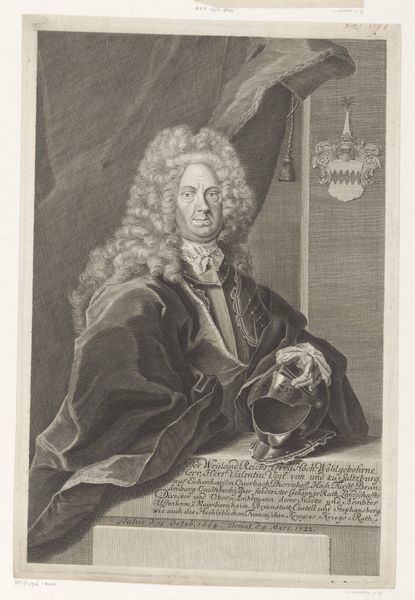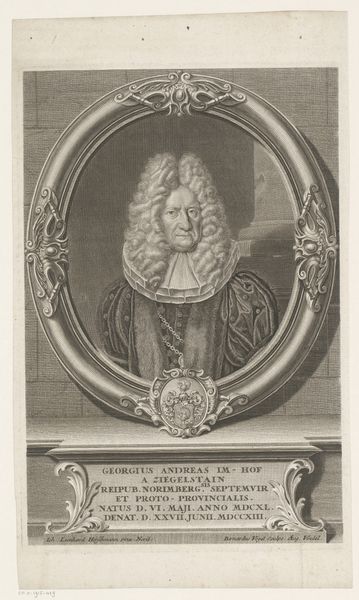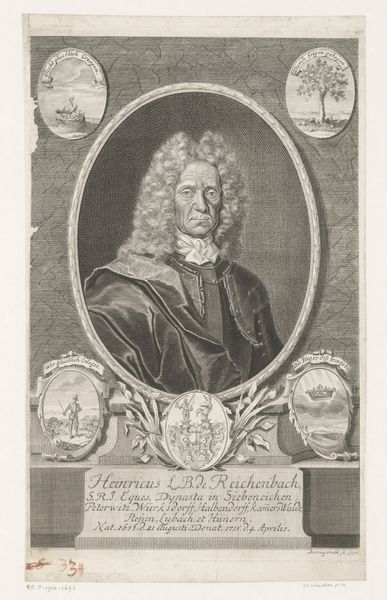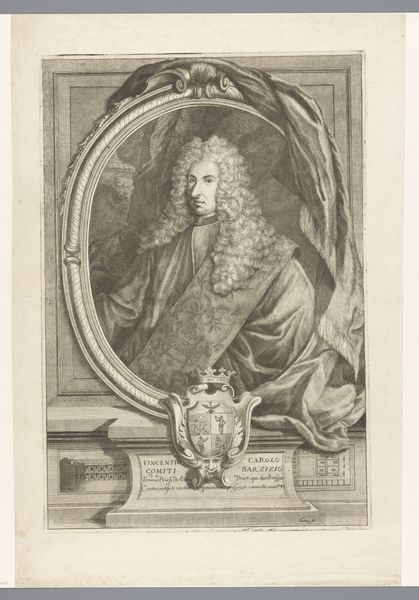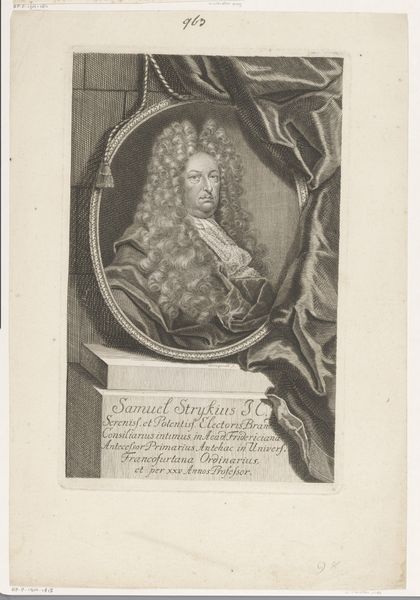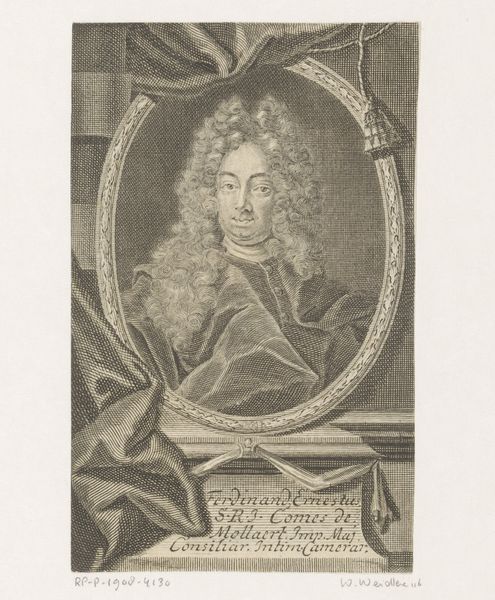
engraving
#
portrait
#
baroque
#
old engraving style
#
figuration
#
history-painting
#
engraving
Dimensions: height 144 mm, width 86 mm
Copyright: Rijks Museum: Open Domain
Curator: So, here we have a piece from 1716: "Portret van Johann Adolph II von Sachsen-Weißenfels," now held in the Rijksmuseum. It’s an engraving by Martin Bernigeroth. My first thought is just look at the Baroque excess! What's your initial reaction? Editor: That hair! It’s practically a character in itself. I feel like he's daring me to run my fingers through it—which I obviously wouldn't. It's got a theatrical vibe. What strikes you about it, historically? Curator: I see a ruler grappling with consolidating power and influence in a time of upheaval and negotiation of identity through symbolic display. Bernigeroth created this within a historical frame when the aesthetic of absolutism had already shaped courts. The detail in rendering fabrics is also remarkable for an engraving, conveying luxury, wealth and status in the Baroque era. Editor: It feels both grandiose and, dare I say, a little fragile. Maybe it’s the monochrome. It invites introspection too. What was this fellow really like behind all the powdered wiggery? It's interesting that we see it now when ideas of royalty have really transformed. Curator: I completely agree. In my mind, It reveals a complex performance. This image circulated, solidifying the Duke's identity. It’s a commentary on political theatre and the importance of image-making within systems of governance, right? Also consider how this type of portrait served as propaganda. How do you see that resonating today, given our present age of "image politics?" Editor: Propaganda indeed! Nowadays he would have an Instagram account and be selling hair tonic, right? Seriously, the way we construct and deconstruct these crafted personas feels remarkably similar, even across centuries. What do you make of the fact that its made in printmaking medium? Curator: I interpret the choice of engraving as inherently linked to ideas of accessibility, mass communication, and distribution in early 18th-century society. Print democratized image circulation. As reproductions, it allowed broader access to the image and reinforced political ideas for greater society. Editor: True, and think of the skill to reproduce such intricate detail! Overall, this little engraving punches way above its weight in terms of visual impact. I found myself chuckling and intrigued, almost instantly! Curator: For me, it brings forth a larger interrogation about representations of power and their echoes in contemporary social dynamics. And considering that history and those echoes makes this image especially vital.
Comments
No comments
Be the first to comment and join the conversation on the ultimate creative platform.
